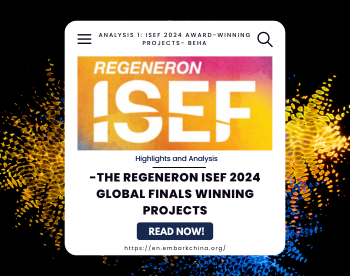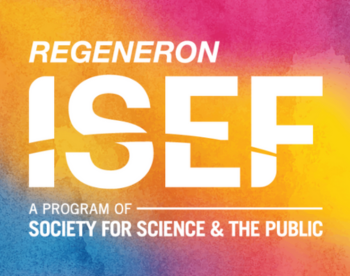Research Ideas in Materials Science for High School Students
Materials Science is an interdisciplinary field that studies materials' structure, properties, and behavior in various applications. It combines knowledge from physics, chemistry, engineering, and some biology to understand and improve existing materials, as well as to develop new ones to meet industrial, technological, and societal needs. High school students can stand out in college applications with a background and interest in Materials Science.
Materials Science has applications in many areas, including electronics, energy, automotive, aerospace, and medicine. Studying Materials Science can open a wide range of career options for high school students and increase job opportunities. As technology advances, the demand for high-performance and novel materials continues to grow, driving the demand for materials scientists. According to the U.S. Bureau of Labor Statistics (BLS), the median annual salary for Materials Science Engineers typically ranges from $85,000 to $95,000. Starting salaries may be slightly lower, but with experience, the salary level can significantly increase, with experienced engineers or those in senior positions earning over $120,000. Salaries may vary by sector; for example, those in the semiconductor and aerospace industries often earn higher wages compared to those in academia or public sectors.
If you're interested in Materials Science, starting research projects in high school can help you assess if this field could guide your future career development.
Key Factors for High School Students Choosing Research Topics
When choosing a topic for your academic research paper, you want to select a compelling subject that immediately captures the reader's attention. Similar to choosing a persuasive speech or argumentative essay topic, it's crucial to pick something you are personally interested in. If you find the topic interesting, you're likely to spend more time delving into it, gathering information to strengthen your arguments. Moreover, if a topic sparks your curiosity, your enthusiasm may also inspire others!
Regardless of your choice, ensure that the topic is researchable, meaning there are sufficient research resources available. Even the most interesting topic won't make a good paper if there isn't enough research material. Remember, your research paper will be longer and more in-depth than a typical academic paper, which means you will need more information and analysis of existing materials. Conduct a preliminary search to ensure there is enough information to help you build a comprehensive argument with multiple perspectives.
Here are 20 materials science research ideas designed by Embark mentors for high school students that you might consider exploring
20 materials science research ideas for High School Students
1. Developing a Mosquito Repellent Material Using Natural Leaves
This project aims to design a new mosquito repellent material using natural leaves to replace traditional chemical repellents, providing an effective and safe way to repel mosquitoes.
2. Creating a Bio-Inspired Insect Trap Using Nepenthes Plants
This project focuses on developing a bio-inspired insect trap based on the principles and structures of Nepenthes plants to address insect control issues in agriculture, sanitation, and environmental protection.
3. Fog Water Collection Technology Based on Bio-Inspired Lotus Leaves
Fog water is considered a potential solution to water scarcity. This project aims to develop an efficient, sustainable, and cost-effective fog water collection method using bio-inspired superwetting materials.
4. Alternative Desiccants Using Tea Leaves and Coffee Grounds
This project explores the use of various tea leaves and coffee grounds as alternative desiccants by measuring their moisture absorption capacity and evaluating their potential to replace chemical desiccants.
5. Applications of Carbon Dots in Photodynamic Therapy
Phototherapy, including photodynamic therapy (PDT) and photothermal therapy (PTT), is emerging as a promising cancer treatment due to its non-invasive nature and minimal side effects. This project explores how carbon dots can enhance PDT applications.
6. New Materials for Water Pollution Treatment
This project involves designing new materials loaded with catalysts that can quickly treat pollutants without introducing chemicals, preventing secondary contamination of water bodies. Students will learn about new environmental materials and catalyst-based water treatment.
7. Microporous Polymers
This project aims to use atomistic molecular dynamics to simulate the packing of microporous polymers at the molecular scale and explore how microstructures affect macroscopic properties. It suits students interested in computational simulations and advanced material development.
8. Porous Materials for Uncontrolled Inflammation Treatment
This project involves designing biocompatible materials with porous structures to absorb large biological molecules, demonstrating their potential in treating uncontrolled inflammation.
9. Photothermal Therapy for Cancer
This project aims to design a new photothermal agent with excellent photothermal conversion efficiency in the near-infrared (NIR) region, providing advantages such as remote operation, minimal damage to normal tissues, and high transparency for cancer treatment.
10. Batch Production and Application of High-Performance Photothermal Materials
This project focuses on preparing a polymer composite with excellent light absorption capabilities, studying its potential for large-scale production in casting and coating applications.
11. New Soy Protein-Based Tissue Regeneration Scaffolds
The goal of this project is to create a porous 3D scaffold from soy protein and investigate the effects of transglutaminase on its properties, evaluating its feasibility for tissue engineering applications.
12. Nonlinear Mechanical Wave Propagation in Coupled Metamaterials
This project explores a heterogenous form of a two-degree-of-freedom (DoF) rotating square system made from reconfigurable components to study its unique mechanical properties.
13. Porous Materials for Uncontrolled Inflammation Treatment
This project involves designing biocompatible materials with porous structures to address uncontrolled inflammation, demonstrating their potential through detailed characterization.
14. Photothermal Therapy for Cancer
This project focuses on designing a new photothermal agent with superior photothermal conversion efficiency in the NIR region, offering unique advantages for cancer treatment through in vitro and in vivo experiments.
15. Degradable Microneedles for Drug Delivery
This project aims to develop a microneedle-based drug delivery system using biocompatible and degradable materials as matrices and nanoparticles as drugs, with potential applications in treating uncontrolled inflammation and wound healing.
16. Degradable Brush-Like Polymers for Drug Delivery
This project involves designing a series of biocompatible and degradable brush-like block copolymers to create micelles for anti-cancer drug delivery, demonstrating their effectiveness and advantages through experiments.
17. Hydrogel Patches for Wound Healing
This project aims to design and synthesize a hydrogel with antibacterial properties and the ability to deliver healing-promoting substances for wound repair.
18. Smart Stimulus-Responsive Actuators
This project focuses on developing smart actuators with high flexibility and multi-stimulus responsiveness to mimic biological movements, such as lifting and material handling, by combining photothermal materials with hydrophilic materials.
19. Polymer-Based CO2 Adsorption Materials
This project involves preparing porous polymer materials for CO2 adsorption using a high-throughput approach, exploring a reverse photosynthesis-like process to convert released CO2 into stable compounds.
20. Polymer-Based Solid Electrolytes for Lithium-Ion Batteries
This project aims to design and synthesize a series of bottle-brush block copolymers as solid polymer electrolytes for lithium-ion batteries, analyzing their thermodynamics, ionic transport, and mechanical properties about molecular characteristics.
Embark Exploration Program
If you are considering an independent study, the Embark Exploration Program is worth exploring. This educational institution provides customized research training for young people, with a core team of master's and doctoral graduates from prestigious American universities. The program offers online short courses led by top-tier mentors, allowing you to collaborate with like-minded peers.
If you have any questions or would like to learn more, feel free to contact us. We are happy to assist you and explore possible collaboration opportunities.



